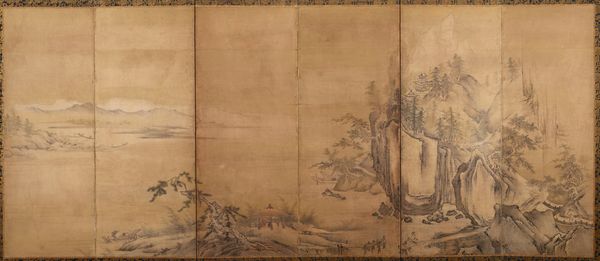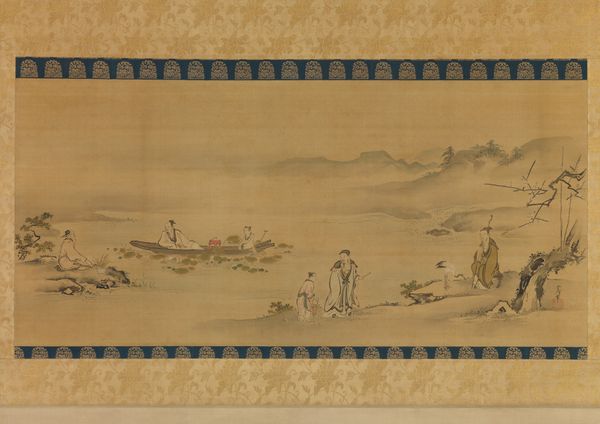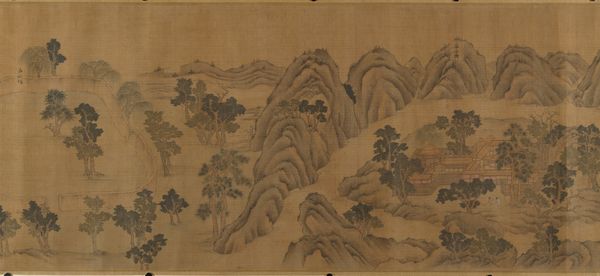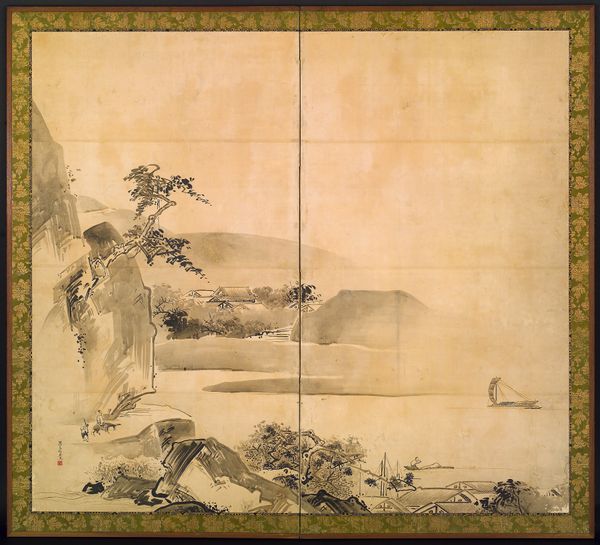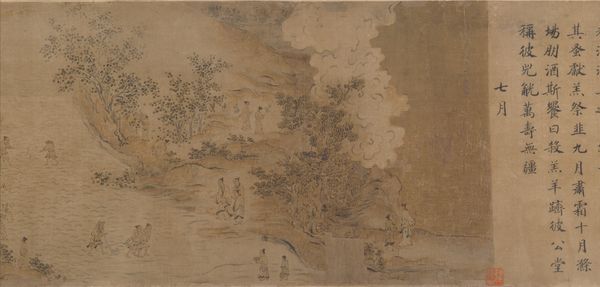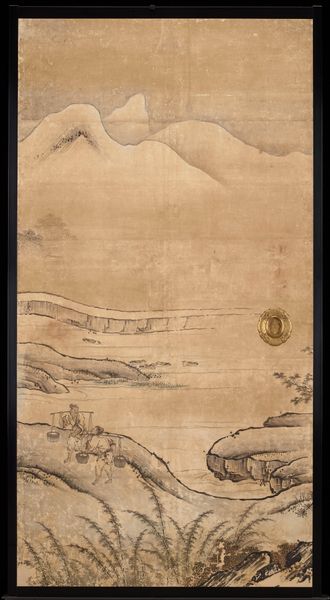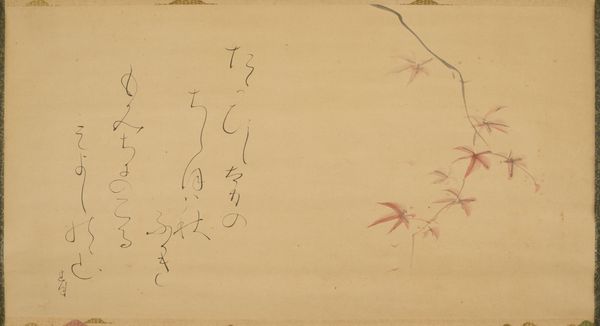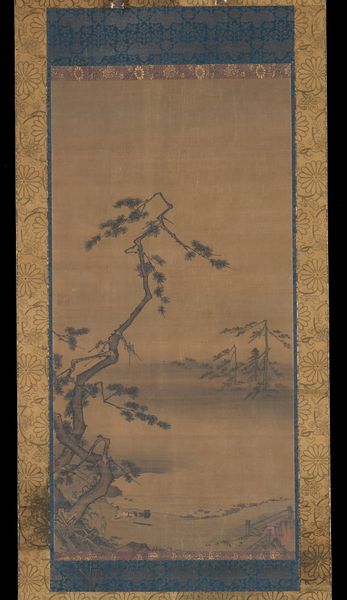
painting, watercolor, hanging-scroll, ink
#
portrait
#
water colours
#
painting
#
asian-art
#
landscape
#
ukiyo-e
#
japan
#
figuration
#
watercolor
#
hanging-scroll
#
ink
#
watercolor
#
calligraphy
Dimensions: 46 3/4 x 20 in. (118.75 x 50.8 cm)
Copyright: Public Domain
Curator: Welcome. Before us hangs “Ducks,” a hanging scroll rendered with ink and watercolor on silk. It's attributed to Kusumi Morikage, created around the 17th century. What strikes you initially about this piece? Editor: A certain melancholy. The muted palette and the solitude of the duck evokes a quiet, introspective mood. Is this common in the art of this period? Curator: Morikage was indeed known for imbuing his landscapes with a sense of peaceful solitude. Note how he uses empty space. It’s not just the depiction of scenery, but an invocation of atmosphere. Consider also the masterful brushstrokes—economical yet expressive—to define form and texture, from the soft plumage to the craggy rock. Editor: But that sense of quietude—it makes me wonder about the context in which such images were made and appreciated. Was this escapism? Perhaps these scenes provided a refuge for a merchant class excluded from the ruling elite but beginning to accrue power? We know many such pieces served as diplomatic gifts. The image naturalizes certain relations and conceals others. Curator: Interesting. Perhaps, though I see more universally relevant choices. The composition relies on traditional framing, with the main element anchored low and the inscription—calligraphy—balanced above to direct the eye and harmonize visual elements. The poem also functions as part of the composition. I think focusing primarily on a socio-political frame detracts from a vital pictorial relationship. Editor: Fair enough. The duck can represent fidelity, or conjugal bliss, or simple familial togetherness. Who gets to access the luxury of fidelity if certain peoples are enslaved or otherwise barred from it? I'm wondering how access to natural scenery mirrors societal imbalances. Curator: A sobering perspective, especially in light of unequal labor conditions during the era that provided the upper class opportunity to experience it. We often want these images to speak only of harmony and tranquility, as demonstrated formally through the careful balance of elements. Thank you for encouraging me to reconsider. Editor: My pleasure.
Comments
minneapolisinstituteofart almost 2 years ago
⋮
Ducks, which begin arriving in late fall and populate creeks and ponds throughout the Japanese islands through the cold winter, have long been a favorite subject of Japanese poets and painters. Since they remain on the water even as ice forms around them and frost forms on their colorful feathers, they often serve as a metaphor for sleeping alone or remaining faithful to one’s partner when away from home. In this painting, Kusumi Morikage shows a pair of mated ducks in a creek at night with a poem above.
Join the conversation
Join millions of artists and users on Artera today and experience the ultimate creative platform.

